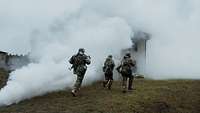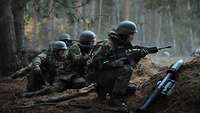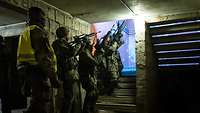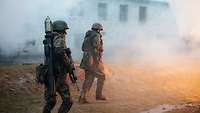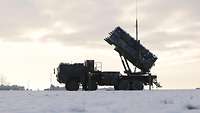Fighting in Complex Terrain – Infantry training at EUMAM UAEuropean Union Military Assistance Mission Ukraine
Fighting in Complex Terrain – Infantry training at EUMAM UAEuropean Union Military Assistance Mission Ukraine
- Date:
- Place:
- Strausberg
- Reading time:
- 4 MIN
In the defense of their home country, the Ukrainian military is continuously faced with new challenges. It is thus all the more important that the EUMAM UAEuropean Union Military Assistance Mission Ukraine training course are continuously adapted and further developed. The “Fighting in Complex Terrain” infantry training is a good example of said ability to adapt.
Background
Since February 2022, Ukraine is defending itself against Russia’s unjustified attack. While the initial focus was on defending urban or strategically important areas, the Ukrainian military has been fighting in completely different areas of operation ever since the start of its counteroffensive. Some of the challenges posed by the Russian defense lines are the same as those that were characteristic for World War II 80 years ago - extended trench systems and miles upon miles of minefields. Since the employment of armored vehicles proved to be ineffective under the given conditions, the Ukrainian military is now increasingly using infantry forces to clear the Russian trench systems. The purpose of the “Fighting in Complex Terrain” training is to prepare the Ukrainian infantry soldiers for operations in urban areas, trench systems, and also in wooded areas.
Approach
On one of the training areas of Training Center North, German paratroopers and a Ukrainian infantry company prepare for the upcoming training day The handling of weapons and ammunition is not new to the Ukrainian soldiers, most of them originally come from towns and villages in today’s war zones and have already been deployed to defend their country. Within their four-week training here in Germany, they are to learn the tactical principles necessary for employments at squad, platoon, or company level in different areas of operation.
Dawn has not yet broken when they arrive at today’s maneuver area. Here the platoon leader receives the first tasks within a wooded area not far from a training village. Enemy forces have taken up positions in the village, and the platoon’s task is to capture the strategically important station building. The platoon leader immediately starts with the evaluation of the situation in order to be able to plan the next steps and then briefs their soldiers during a short orders briefing. After that, the first phase of attack begins and the platoon, subdivided into three squads, slowly approaches the edge of the woods. The soldiers are vigilant and cautious because also outside of the village they could run into enemy forces at any time. As soon as they get to the edge of the woods, the soldiers move into position - every soldier knows their task ahead and makes final preparations.
Attack
Two smoke grenades, also referred to as smoke pots, are thrown with accurate precision and land in between a nearby building and the fighting position of the first group. The purpose of the smoke is to protect the further advance of the soldiers from enemy eyes and thereby enable them to ideally enter the building unnoticed. The squad leader finally shouts “attack”, and the soldiers, protected by the covering fire of the second squad, start their assault on the building. Close quarters combat - engagements at close and very close ranges with every means available - requires flexibility and good coordination within the squad. In complex infrastructure or trench systems, the infantry soldiers must bring down enemy forces with pinpoint accuracy in fractions of a second while avoiding friendly fire, i.e. inflicting damage on own forces. So the soldiers work their way forward from room to room and floor to floor, until they have captured and secured the entire building. But this does not mean they have accomplished their mission, yet. This building is only an intermediate objective required to enable the attack on the station building.
All of a sudden, the squad comes under fire. Enemy soldiers are still positioned in the opposite building, but the squad members are already stretched too far to attack another building. Via radio, the platoon leader immediately calls for reinforcements. It is now pivotal to maintain the momentum of attack and move into the second building as fast as the situation allows. The second squad continues to provide covering fire, thus enabling the two assault squads to advance and eventually launch their attack on the second building. For one last time, the platoon leader coordinates their troops and issues a short combat order, and then the assault begins.
Training for the Front Line
“Some aspects still need improvement”, says one of the instructors during the subsequent evaluation. Particularly the coordination of the employed elements and the protection of own soldiers are huge challenges for all soldiers undergoing this training. But the Ukrainian soldiers are highly motivated and manage to correct some of their mistakes already during the next scenario. Six days a week for up to 12 hours they are taken to the test in these demanding trainings. This is the only way possible to acquire all the necessary skills and tactics within the short training duration. Only a few days after the training they will return to the front line. Being infantry soldiers, their mission is highly dangerous, and not all of them will survive this war. It is therefore of utmost importance to make best possible use of the available training time in order to increase the chance of survival on the battlefield for the Ukrainian soldiers.


